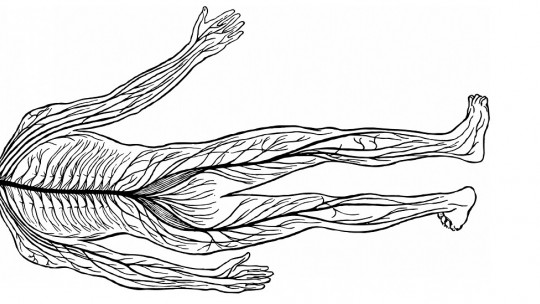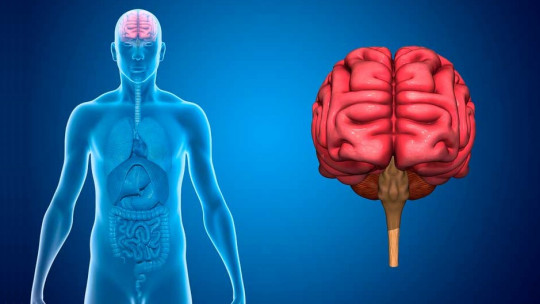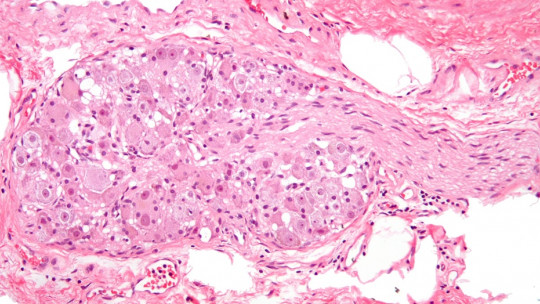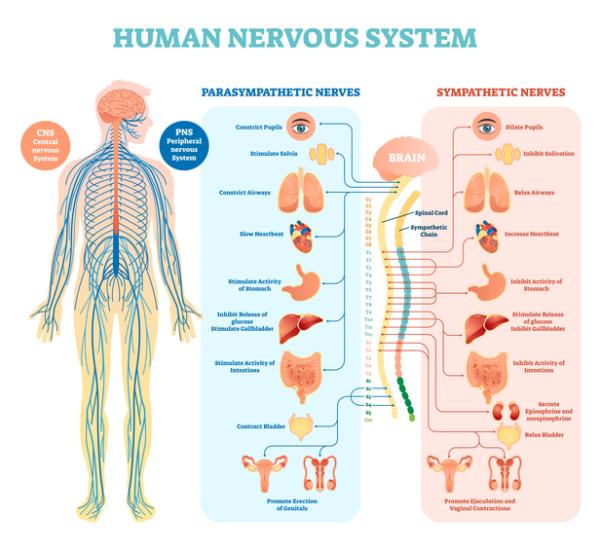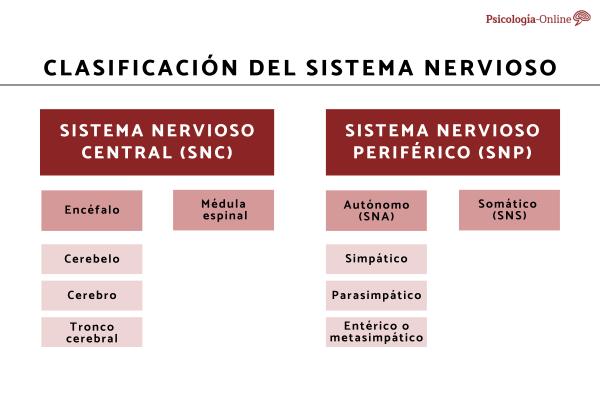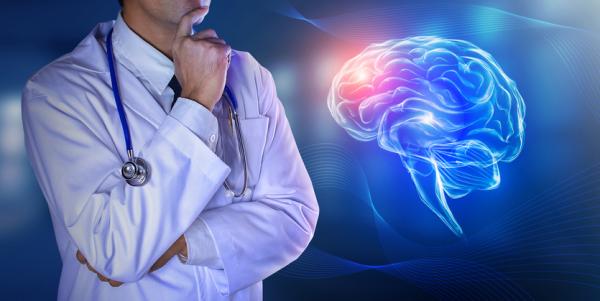
When something scares and alarms us, our body reacts, causing different alterations in the body. Our breathing and heart speed up, our mouth becomes dry, our muscles receive greater blood flow, our pupils dilate and we contract our sphincters.
These are actions that we do unconsciously, which prepare us for action if necessary. These responses are controlled by the autonomic nervous system, and within this by what is known as the sympathetic system.
One of the divisions of the autonomic nervous system
The sympathetic nervous system is one of the branches of the autonomic nervous system, this being the element that controls visceral reactions and reflexes. This autonomic system is made up of both the sympathetic system and two more divisions, the parasympathetic system and the enteric system.
On the other hand, the sympathetic system It is made up of a chain of ganglia originating in the medulla oblongata, connecting to the spinal cord and the organs they innervate. Thus, we generally find preganglionic and postganglionic neurons.
Preganglionic neurons are those that connect the spinal cord and ganglion, generally functioning from the neurotransmitter known as acetylcholine. Regarding the postganglionic neurons, which connect the ganglion and the target organ, in the sympathetic system the action occurs from the emission of norepinephrine.
Main functions of the sympathetic nervous system
While the parasympathetic system is responsible for carrying out processes that save the body energy and the enteric system focuses on the usual management of the digestive tract, the sympathetic system Its main function is to prepare the body to respond quickly to external stimulation causing processes that involve the consumption of a large amount of energy in order to ensure survival.
Thus, the sympathetic system provokes a series of energetic physiological reactions that allow survival, allowing the fight-flight reaction to be the most important of its functions. These reactions will later be combated by the parasympathetic system, There is a homeostatic balance that keeps the body in an optimal state of functioning depending on external stimulation.
In summary, it can be considered that the main functions of the sympathetic system are found in the acceleration of the body’s functions and preparation for action in the face of possible threats It also contributes to the existence of homeostasis by regulating and avoiding excessive action of the parasympathetic system (which could cause a heart rate that is too slow, for example).
However, it may be interesting to see what type of reactions cause the activation of this system, reactions that will be seen in the next section.
When the sympathetic is activated: reactions it causes
The main function of the sympathetic system is to activate the body to facilitate the reaction to stimuli. To do this, it activates a series of physiological reactions that prepare us to respond. It must be taken into account that this activation of the sympathetic system facilitates fight or flight from threatening events but its activation does not occur only in these types of situations.
This system acts regularly to maintain body homeostasis and participates in multiple processes that require physiological activation. Let’s see below some of the reactions it provokes.
1. Eye reflex
The sympathetic system produces at the ocular level mydriasis or pupillary dilation, a fact that allows greater visual capacity that can allow you to better see possible dangers. It is an automatic and unconscious process since it is used constantly regardless of the relevance of the objective.
2. Action on the cardiovascular system
The heart rate increases due to the activation of the sympathetic system, producing an increase in the rate at which oxygen and nutrients are sent through the blood. This increase targets the muscles, preparing them for action and causing resources to be dedicated to keeping the motor aspects of the body going.
In addition, blood pressure is regulated and increased, so that blood flows more quickly through the vascular system and reaches the different organs sooner. Of course, this helps them to offer a rapid response to the needs of the moment, which in turn causes other parts of the body to also adapt to that rhythm. In this way a balance is maintained even though conditions have changed by order of the sympathetic nervous system.
3. Secretion of adrenaline, norepinephrine and glucose
The sympathetic system also causes the release of adrenaline and norepinephrine into the blood through the kidneys, in order to increase physical and psychological activation The release of glucose into the blood from the liver is also increased.
4. Lung dilation
Given the action of the sympathetic system, the lungs begin a bronchodilation process in order to capture a higher level of oxygen and optimize the supply system for this resource.
5. Decreased gastrointestinal system performance
The digestive process consumes a large amount of energy on its own. In order to conserve that energy, the parasympathetic system greatly reduces and slows down the activity of the digestive tract and the glands that secrete digestive enzymes. At the oral level, it also stops the production of saliva, which is why it is common for our mouths to dry out in stressful situations.
6. Stops excretion
In the face of possible danger, excreting can represent a situation of vulnerability incompatible with survival. The sympathetic nervous system causes the sphincters to contract, making it difficult. Urinating or defecating are usually processes that are delayed in situations of stress or tension, although it is not something entirely impossible. In this way, all mental activity is concentrated on the most immediate objectives, downplaying those that can be postponed precisely because those needs can be satisfied later without paying a price.
7. Ejaculation and orgasm
As we have indicated previously, the sympathetic system is not activated only in dangerous situations, but rather participates in multiple physiological processes. An example of this is their participation in sexual relations, causing ejaculation in men and orgasm in both sexes. However, just before this, a state of constant effort and stress typical of the rest of the situations in which the sympathetic nervous system intervenes does not favor the appearance of this phenomenon, giving rise to an apparent paradox.
Path of the sympathetic nervous system
The sympathetic system is made up of two chains of twenty-three ganglia that They circulate along and on both sides of the spinal column, innervating different organs and systems along the way
These chains send nerve endings to both organs and the vascular system. The route that follows would be the following.
1. Point of origin: Medulla oblongata
The sympathetic system, along with the set of networks of the autonomic nervous system begins in the medulla oblongata cerebral nucleus located in the brain stem that controls the set of unconscious vital functions and in which said system originates. It is a neurovegetative structure of great importance for life It will be from this that the chains of sympathetic ganglia will project, innervating the rest of the organism.
2. Cervical region
The first large region where we can find the first lymph nodes is located in the cervical area. In this cervical trunk we can find three ganglia, upper, middle and lower cervical, which connect with regions such as the ocular muscles, the meninges, the pituitary gland, and the vagus, glossopharyngeal and hypoglossal nerves, which is linked to the ability to control the intensity of light that the eyes capture , the emission of hormones and the ability to swallow. Some of these nodes also have an important role in controlling the heart, as well as the thyroid.
3. Thoracic region
In the thorax, the sympathetic system can find a dozen ganglia, which innervate the organs located in the corresponding areas. Lungs, heart and digestive tract are the most important elements However, part of the ganglia that govern the heart originate from the upper and lower cervical ganglia (although the latter is located at the level of the ribs), giving rise to some cardiac nerves.
4. Lumbar region
The part of the sympathetic nervous system that runs in the lumbar region is of great importance, due to the large number of organs it innervates. Under normal conditions, five ganglia can be found in this area, from which nerve fibers arise that they reach the solar plexus and its continuation, the aorticoabdominal plexus These plexuses innervate most intra-abdominal organs, having connections with the spleen, liver, diaphragm and stomach, among others.
5. Pelvic region
This is the most caudal part of the sympathetic system, which runs in the pelvis. The two chains of ganglia They join in this area in the coccygeal ganglion In this area, the pelvic plexus, you can find four ganglia that innervate rectum and bladder Other secondary plexuses emerge from these, which control the gallbladder, prostate and penis/vagina and clitoris.

